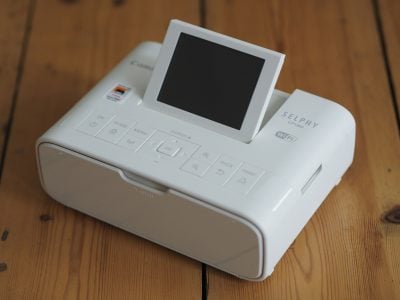Nikon Micro lens comparison
-
-
Written by Thomas
Nikon offers no fewer than six modern macro lenses designed for close-up photography, and still sells four older models in some regions. These are all known as Micro-Nikkors and of the six modern options, two are specialist PC-E tilt-shift models, leaving four for general macro use: the DX 40mm f2.8G, 60mm f2.8G, DX 85mm f3.5G VR and 105mm f2.8G VR.
All four are AF-S lenses, which means they’ll autofocus on any Nikon DSLR including entry-level models. The 40mm and 85mm are DX models which means they’re only corrected for use on DX-format bodies with smaller APS-C sensors, while the 60mm and 105mm will work on any Nikon DSLR including full-frame FX-format models. And finally, the 85mm and 105mm models also sport Vibration Reduction facilities to combat camera shake.
On this page I’m comparing the optical quality of the latest three Micro-Nikkors, the DX 40mm f2.8G, DX 85mm f3.5G VR and the 105mm f2.8G VR. Since two of the three are only corrected for the DX-format, I’ve used a DX body to test them. These results accompany dedicated reviews of each of the three lenses, so to find out more, please check them out at the following links:
Nikon 40mm Micro-Nikkor review
Nikon 85mm Micro-Nikkor review
Nikon 105mm Micro Nikkor review
Optical formula / cross-section
The following images show the cross-section through the lenses, ED glass elements are depicted in yellow. The 40mm lens has the simplest construction (which is not necessarily bad) while the 85mm and 105mm designs are more complex and look pretty similar to each-other.
| Nikon Micro Nikkor cross-section | ||||
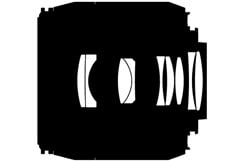 |
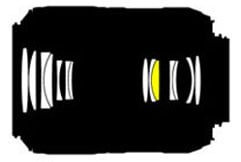 |
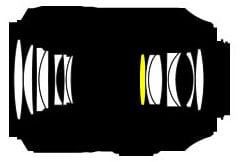 | ||
DX Micro-Nikkor 40mm f/2.8G |
DX Micro-Nikkor 85mm f/3.5G VR | VR Micro-Nikkor 105mm f/2.8G | ||
| The three Micro-Nikkors |
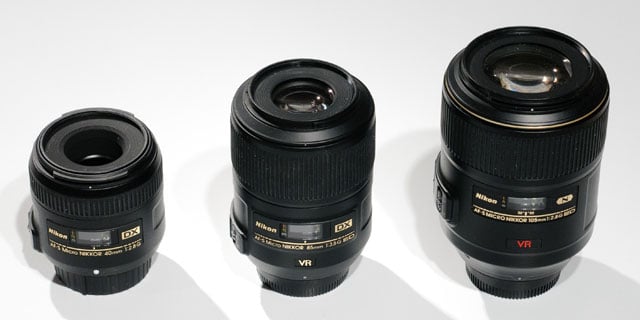 |
| Form left to right: 40/2.8G, 85/3.5G VR, 105/2.8G VR |
Sharpness and contrast
Following are the MTF-charts of the three lenses as measured by Nikon:
| Nikon Micro-Nikkor MTF | ||||
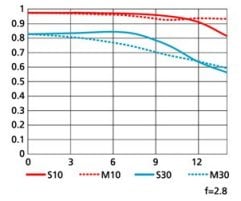 |
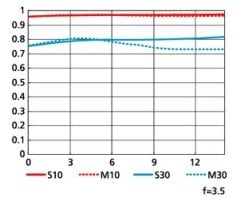 |
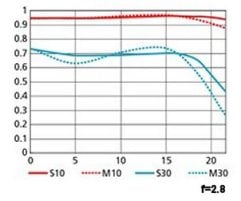 | ||
DX Micro-Nikkor 40mm f/2.8G |
DX Micro-Nikkor 85mm f/3.5G VR | VR Micro-Nikkor 105mm f/2.8G | ||
These charts show the lens-performance at the largest aperture. To read these charts you only have to understand that higher values are better and that the closer the dotted and the continuous lines are together the less astigmatism (= resolution depending on the orientation of the test-pattern) the lens displays.
When comparing the MTF-charts of those three lenses you should not forget that this is not on an apples-to-apples basis: The chart for the f2.8-lenses shows performance at f2.8, a disadvantage of 2/3 of a stop compared to the 85/3.5G. As lenses sharpen up pretty quickly when stopped down (at least up to f5.6) there is no way to know or calculate how the 40/1.4G or 105/2.8G perform at f/3.5 from these charts. So what we need to compare these lenses are real test-shots with a challenging target: the Siemens-stars. The other thing to keep in mind is that the performance of the 105/2.8G is shown for the FX image-circle (21.5mm radius) while the charts for both DX-lenses only go to 14mm radius
This following comparison of Siemens-star test-shots comes in four parts: normal center, normal DX corner, macro center, macro DX corner. And in each part we’ll be showing the 40/2.8G in the first column, the 85/3.5G in the second column and the 105/2.8G in the third column.
Processing was done in CaptureNX2 at standard settings, with white-balance adjusted to a neutral white and some exposure compensation to make the brightness match. CA-removal was ON. Focus was achieved using live-view and a little optimization by hand and performed separately for the center and corners to avoid any effect from field curvature.
These are all 100% crops. Note some macro lenses operate at a slightly slower maximum aperture at certain focusing distances.
Part 1: Center performance at standard (1:35) magnification
Shot from a printed test-target
AF-S DX Micro-Nikkor 40mm f/2.8G with Nikon D300 100% crop from center |
AF-S DX Micro-Nikkor 85mm f/3.5G ED VR with Nikon D300 100% crop from center |
AF-S VR Micro-Nikkor 105mm f/2.8G IF-ED with Nikon D300 100% crop from center | ||
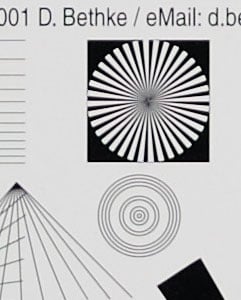 |
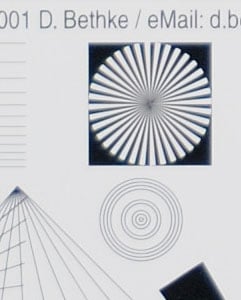 |
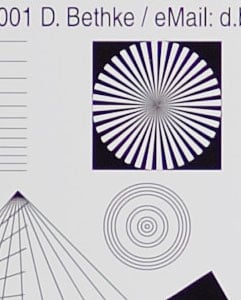 | ||
f2.8, 200 ISO |
f3.5, 200 ISO |
f3.0, 200 ISO (max aperture at 1:35) | ||
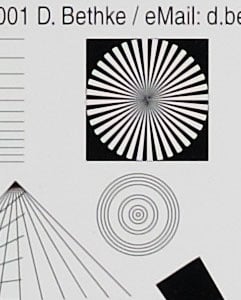 |
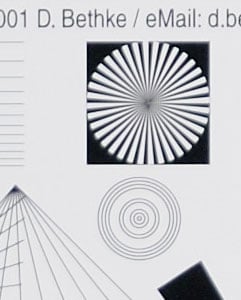 |
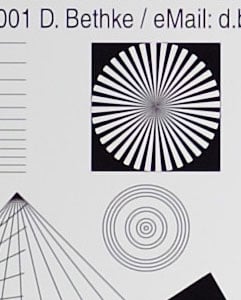 | ||
f4, 200 ISO |
f4, 200 ISO |
f4, 200 ISO | ||
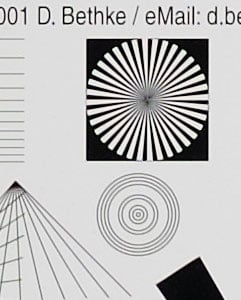 |
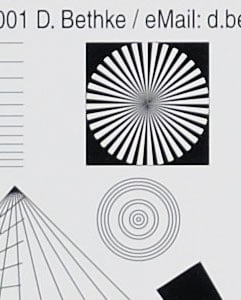 |
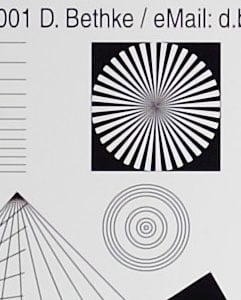 | ||
f5.6, 200 ISO |
f5.6, 200 ISO |
f5.6, 200 ISO | ||
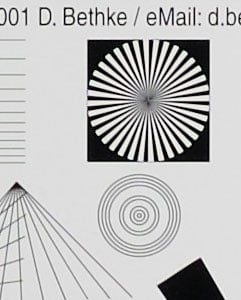 |
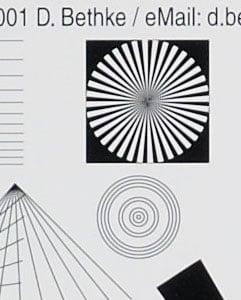 |
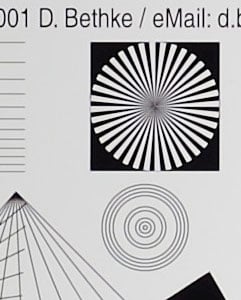 | ||
f8, 200 ISO |
f8, 200 ISO |
f8, 200 ISO |
Part 2: Corner performance at standard (1:35) magnification
Shot from a printed test-target
AF-S DX Micro-Nikkor 40mm f/2.8G with Nikon D300 100% crop from corner |
AF-S DX Micro-Nikkor 85mm f/3.5G ED VR with Nikon D300 100% crop from corner |
AF-S VR Micro-Nikkor 105mm f/2.8G IF-ED with Nikon D300 100% crop from corner | ||
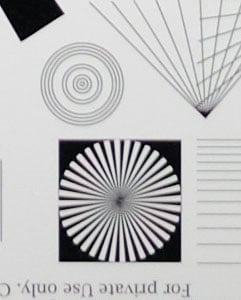 |
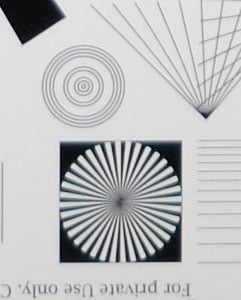 |
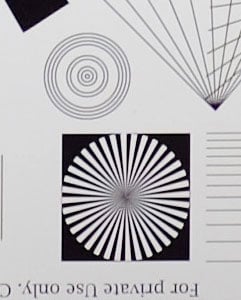 | ||
f2.8, 200 ISO |
f3.5, 200 ISO |
f3.0, 200 ISO (max aperture at 1:35) | ||
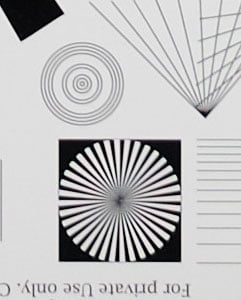 |
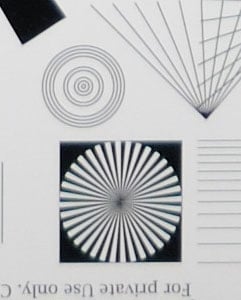 |
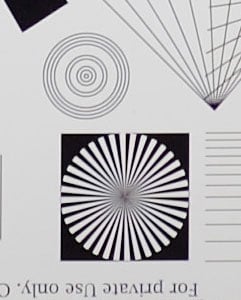 | ||
f4, 200 ISO |
f4, 200 ISO |
f4, 200 ISO | ||
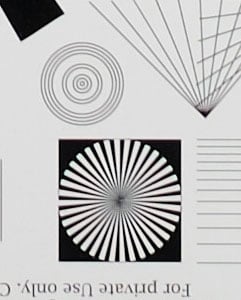 |
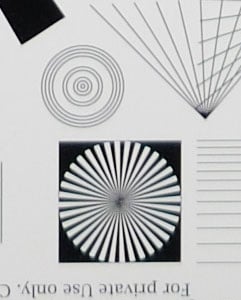 |
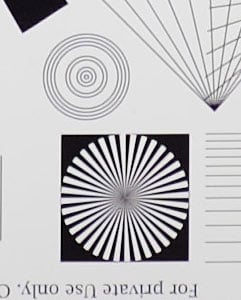 | ||
f5.6, 200 ISO |
f5.6, 200 ISO |
f5.6, 200 ISO | ||
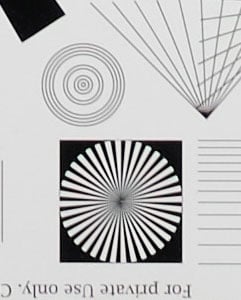 |
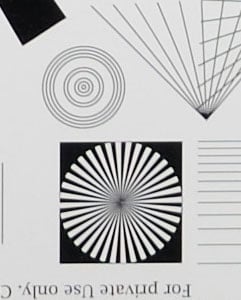 |
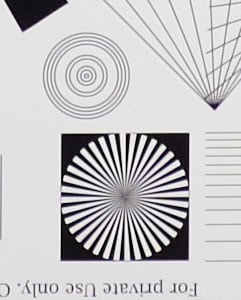 | ||
f8, 200 ISO |
f8, 200 ISO |
f8, 200 ISO |
Part 3: Center performance at around 1:2.6 magnification
Shot from a test-target on a black and white negative 24×36 film
AF-S DX Micro-Nikkor 40mm f/2.8G with Nikon D300 100% crop from center |
AF-S DX Micro-Nikkor 85mm f/3.5G ED VR with Nikon D300 100% crop from center |
AF-S VR Micro-Nikkor 105mm f/2.8G IF-ED with Nikon D300 100% crop from center | ||
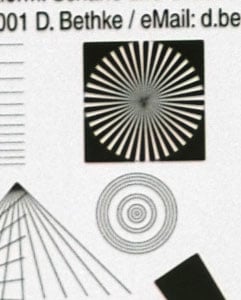 |
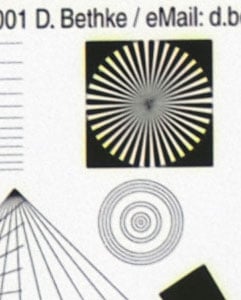 | |||
f3.3, 200 ISO (max aperture at 1:2.6) |
f3.5 not available at 1:2.6 |
f3.3, 200 ISO (max aperture at 1:2.6) | ||
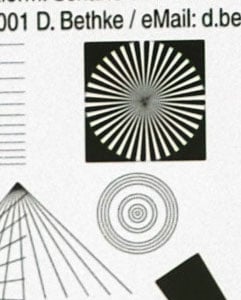 |
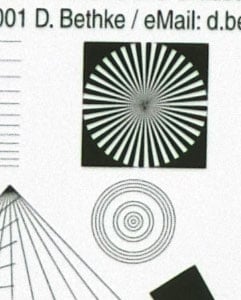 |
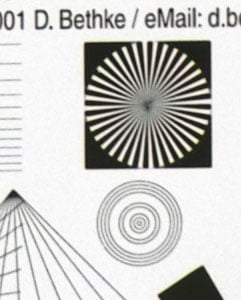 | ||
f4, 200 ISO |
f4, 200 ISO |
f4, 200 ISO | ||
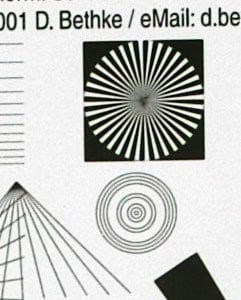 |
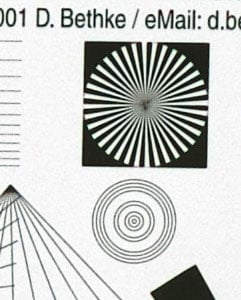 |
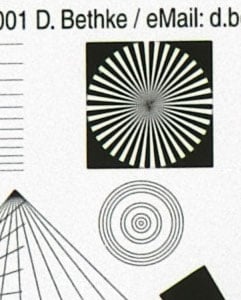 | ||
f5.6, 200 ISO |
f5.6, 200 ISO |
f5.6,200 ISO | ||
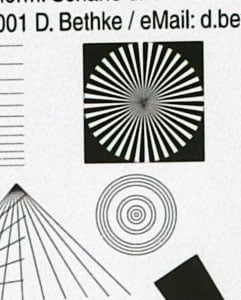 |
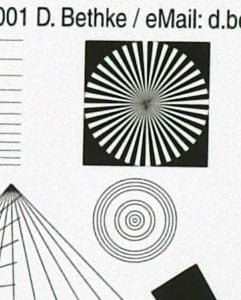 |
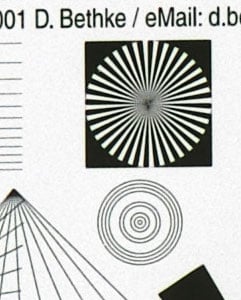 | ||
f8, 200 ISO |
f8, 200 ISO |
f8, 200 ISO | ||
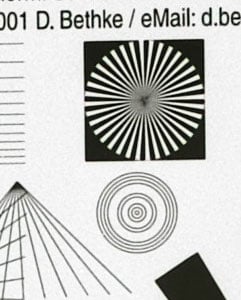 |
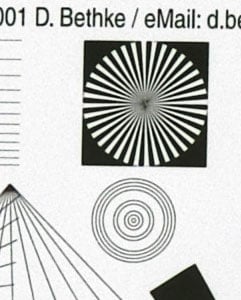 |
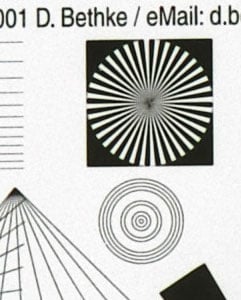 | ||
f11, 200 ISO |
f11, 200 ISO |
f11, 200 ISO |
Part 4: Corner performance at around 1:2.6 magnification
Shot from a test-target on a black and white negative 24×36 film
AF-S DX Micro-Nikkor 40mm f/2.8G with Nikon D300 100% crop from corner |
AF-S DX Micro-Nikkor 85mm f/3.5G ED VR with Nikon D300 100% crop from corner |
AF-S VR Micro-Nikkor 105mm f/2.8G IF-ED with Nikon D300 100% crop from corner | ||
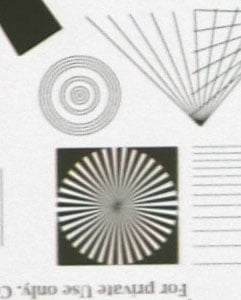 |
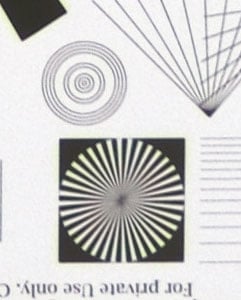 | |||
f3.3, 200 ISO (max aperture at 1:2.6) |
f3.5 not available at 1:2.6 |
f3.3, 200 ISO (max aperture at 1:2.6) | ||
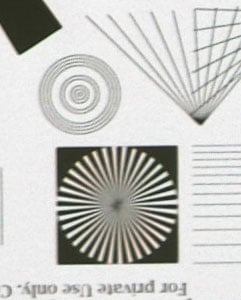 |
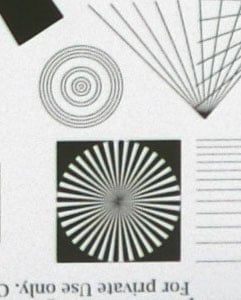 |
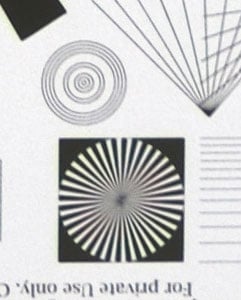 | ||
f4, 200 ISO |
f4, 200 ISO |
f4, 200 ISO | ||
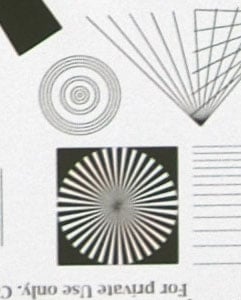 |
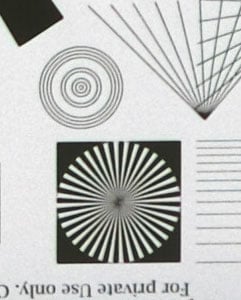 |
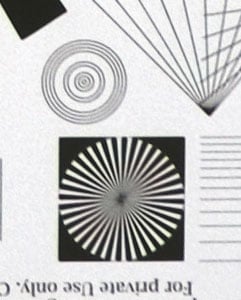 | ||
f5.6, 200 ISO |
f5.6, 200 ISO |
f5.6,200 ISO | ||
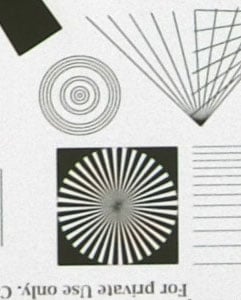 |
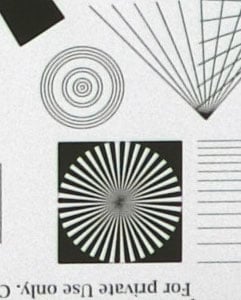 |
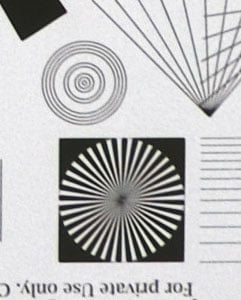 | ||
f8, 200 ISO |
f8, 200 ISO |
f8, 200 ISO | ||
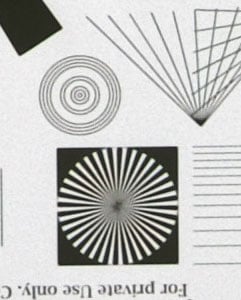 |
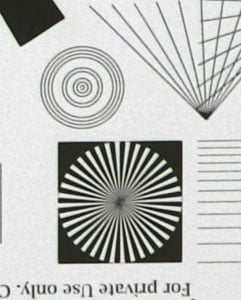 |
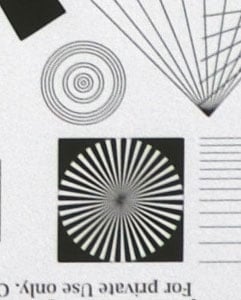 | ||
f11, 200 ISO |
f11, 200 ISO |
f11, 200 ISO |
At normal distances (1:35 magnification) the center performance of the 40/2.8G and the 105/2.8 are top-notch while the 85/3.5G only catches up at f5.6. In the corners the 105/2.8G performs best followed by the 40/2.8G and 85/3.5. From f8.0 on performance is almost indistinguishable. Interestingly the close-field performance at magnifications of 1:2.6 doesn’t follow the same pattern. Close-up at f3.3 the 40mm macro lens is a bit better than the 105mm in the center, while the 105mm leads in the corners. From f4.0 onwards the 85mm macro-lens takes a surprisingly clear lead in the center and the corners as well. From f5.6 the center performance is pretty comparable but in the corners the 85mm lens continues its lead well up to f11.
Summary:
All three contenders are very competent lenses – be it under “normal” shooting conditions or in their special discipline of macro-shooting. So you can pretty much select a lens based on features, price and focal length. There is really only one major point to keep in mind: to get 1:1 magnification with the 40mm lens you need to get as close as 3cm to your subject.
For my detailed reviews of the Micro-Nikkors see the following links:
Nikon 40mm Micro-Nikkor review
Nikon 85mm Micro-Nikkor review
Nikon 105mm Micro Nikkor review
